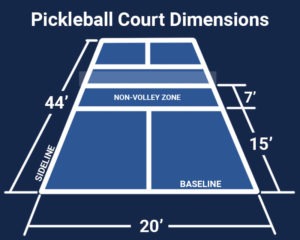Pickleball Court Construction-- Specialist Installation for Your Desire Court
Pickleball Court Construction-- Specialist Installation for Your Desire Court
Blog Article
Lasting Practices in Pickleball Court Building You Ought To Know
As the popularity of pickleball continues to increase, so also does the need for sustainable methods in court building and construction. The impact of these methods prolongs much past the court itself.
Choosing Eco-Friendly Materials
Choosing green materials is a vital action in the building and construction of sustainable pickleball courts. The choice of sustainable materials not only lessens ecological impact but likewise enhances the longevity and efficiency of the court. Trick materials include recycled rubber for the surface, which supplies exceptional resilience and shock absorption while diverting waste from landfills.
Furthermore, using in your area sourced materials reduces transport exhausts and supports local economic situations. Pickleball court construction. Utilizing native woods for fencing and seats can offer a lasting aesthetic while making certain durability versus the elements.
Integrating absorptive products for court foundations can further add to sustainability by enabling natural water drain and lowering runoff. These selections not only secure neighborhood ecological communities however additionally promote healthier play settings.
Efficient Drain Solutions
While the choice of environmentally friendly products is essential, carrying out reliable drainage services is equally important for keeping lasting pickleball courts. Proper drainage not only secures the court surface area from water damages however likewise lessens erosion and runoff, advertising ecological honesty.
Reliable water drainage systems can consist of absorptive paving, which enables water to infiltrate the ground rather than merging on the surface area. This lowers the chance of standing water, which can bring about mold and mildew and other maintenance issues. Additionally, including tactically placed water drainage networks and swales can guide excess water away from the court location, making sure a dry having fun surface area and protecting against soil disintegration.
Using indigenous greenery in the landscaping around the courts can further improve drainage by soaking up excess water and decreasing drainage. These plants require much less irrigation and promote biodiversity, straightening with lasting methods.
In addition, it is critical to consistently maintain the drain system to guarantee its long-term efficiency. This consists of clearing particles and monitoring for obstructions. By focusing on efficient drainage options, pickleball court builders can substantially add to the sustainability and longevity of the center, ultimately profiting both gamers and the setting.
Energy-Efficient Lights Options
As the need for pickleball remains to grow, incorporating energy-efficient lighting alternatives into court design has become progressively important for sustainability. Traditional illumination systems commonly eat too much power, adding to higher operational costs and ecological influence. Consequently, taking on contemporary, energy-efficient innovations is essential for both new building and constructions and renovations.
LED (Light Emitting Diode) lights attracts attention as a leading choice as a result of its durability and power cost savings (Pickleball court construction). Compared to standard lighting, LEDs utilize approximately 75% much less energy and can last as much as 25 times much longer, substantially reducing maintenance prices. The directional nature of LED lights decreases light contamination, making certain that illumination is focused on the court instead than bordering areas.

Lasting Surface Area Alternatives
Discovering sustainable surface area choices for pickleball courts has acquired traction among gamers and building contractors alike. The focus on eco-friendly materials not only straightens with the growing environmental understanding yet likewise enhances the performance and sturdiness of the courts.
This material provides outstanding shock absorption, reducing the danger of injuries for players while advertising sustainability. These ceramic tiles are simple to install and replace, and their convenience permits for various court configurations.
All-natural lawn courts are likewise arising as a lasting choice, promoting biodiversity and reducing the warmth island effect. They need normal upkeep and water, which might not align with all sustainability objectives.

Water Preservation Methods

Another reliable method this article includes the installment of rainwater harvesting systems. These systems store and collect rainwater for use in preserving court surface areas and landscaping. This approach not only preserves safe and clean water yet additionally lowers dependence on local sources.
Moreover, employing drought-resistant landscaping around the courts is essential. Native plants require less water and are much better adapted to neighborhood climate conditions, hence reducing general water intake. Furthermore, using effective watering systems, such as drip watering, makes sure that water is provided directly to plant roots, minimizing evaporation and waste.
Conclusion
Integrating their explanation sustainable methods in pickleball court building and construction dramatically contributes to ecological preservation and resource efficiency. By focusing on these methods, the building and construction of pickleball courts can straighten with broader environmental goals while advertising long life and functionality within communities.
As the popularity of pickleball continues to increase, so too does the requirement for lasting methods in court construction.Choosing green products is an important action in the building and construction of sustainable pickleball courts. By prioritizing energy-efficient lighting alternatives, pickleball court producers can add to a more sustainable future while meeting the requirements of gamers and stakeholders alike.Including sustainable surface options not only boosts the efficiency of pickleball courts however additionally leads the means for executing efficient water conservation strategies.Incorporating sustainable practices in pickleball court construction substantially adds to environmental preservation and resource efficiency.
Report this page